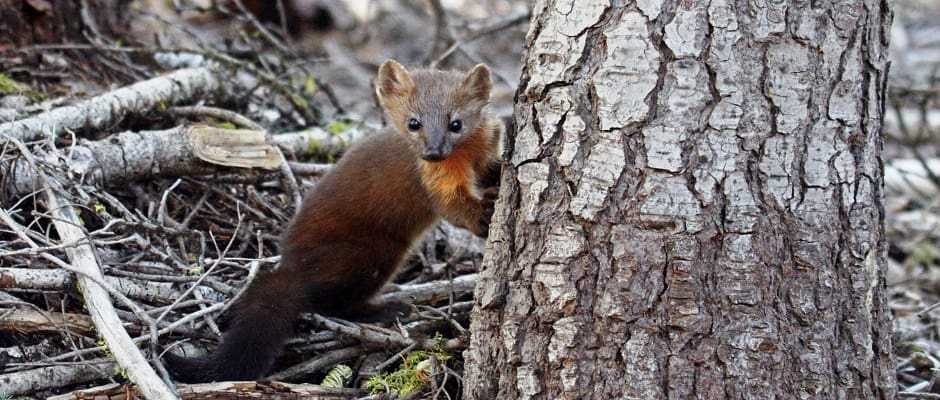Share this article
JWM Study: Less forest thinning can benefit martens
Pacific martens had never been tracked by GPS collars in the high elevation forests they occupy — until recently.
As part of a recent study published in the Journal of Wildlife Management, researchers tracked 22 pacific martens (Martes caurina) in California using GPS collars to evaluate how forest thinning practices aimed to reduce fire severity affect Pacific marten movement and habitat use.
“We were the first to use GPS collars on martens in order to detect fine scale movements on a forest mammal of this size,” said lead author Katie Moriarty who is a postdoctoral research wildlife biologist with the U.S. Forest Service Pacific Northwest Research Station and a TWS member.
Moriarty collaborated with managers in Lassen National Forest in California to determine how martens are affected by forest logging practices used in the area since 1999 with the purpose of thinning in order to maximize community benefits.

A Pacific marten fitted with a GPS collar. ©Tatiana Gettelman
Moriarty and her colleagues first conducted an experiment to determine how far martens would enter forests with different stand types. Simultaneously, the team tracked animals using VHF and GPS telemetry. They found the animals — which are about the size of a grey squirrel and weigh approximately two pounds — moved three to five miles daily. One marten had even moved over 16 miles in one day. “They’re quite neurotic and all over the place,” Moriarty said.
Within the different stand types the team was able to characterize the animals’ movements. Moriarty and her colleagues found martens moved slower and more sinuously in more dense forests. She attributed this to the martens foraging, which interrupts their travel. In more thinned forests, martens moved more quickly and linearly because they are foraging less and attempting to avoid predators.
Moriarty said these results have implications for how land should be managed to benefit Pacific martens. For example, she and her co-authors concluded that thinning is not as necessary in the high elevations where Pacific martens live as it is in lower-elevation forests. Moriarty suggests that managers think about increasing forest complexity so martens can forage and reduce risk of predation before setting out to thin forests.
Moriarty continues to study this weasel family species. She’s working with Lassen National Forest to look at rest and den site selections and characteristics. She’s also working on a project that examines the distribution and habitat use of martens in coastal Oregon.
Header Image: A Pacific marten leans up against a tree in Lassen National Forest. ©Tatiana Gettelman








